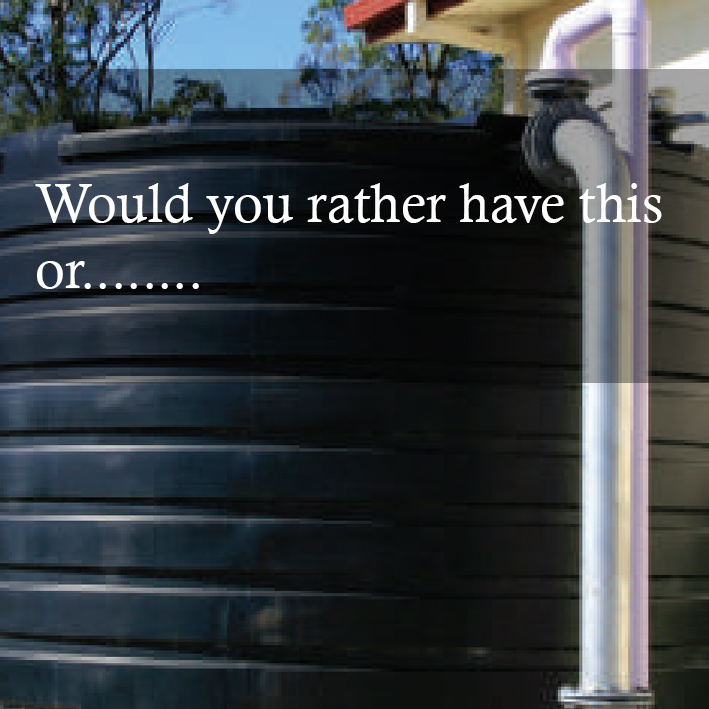
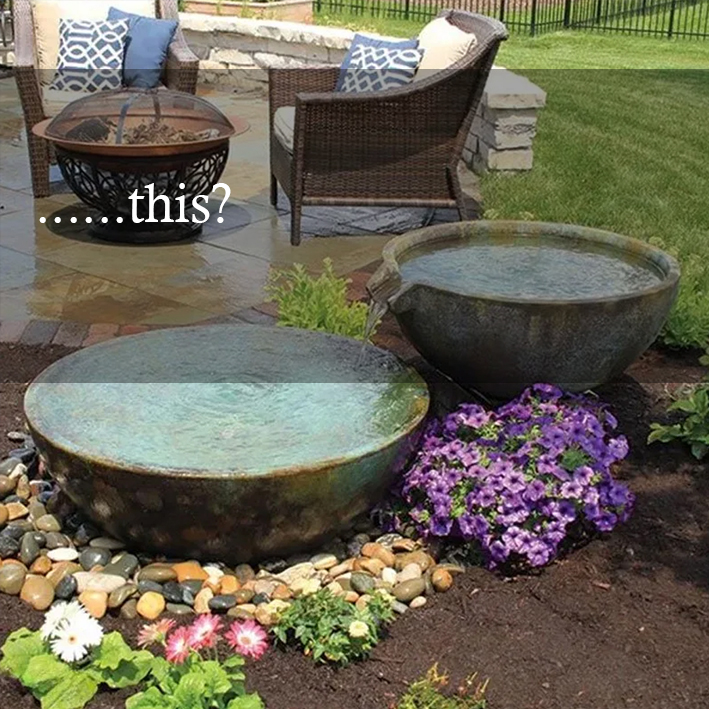
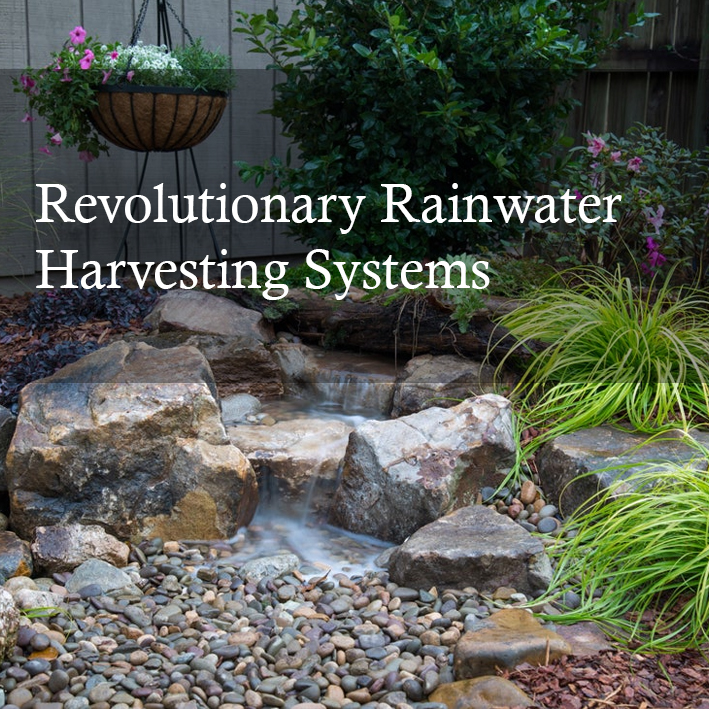
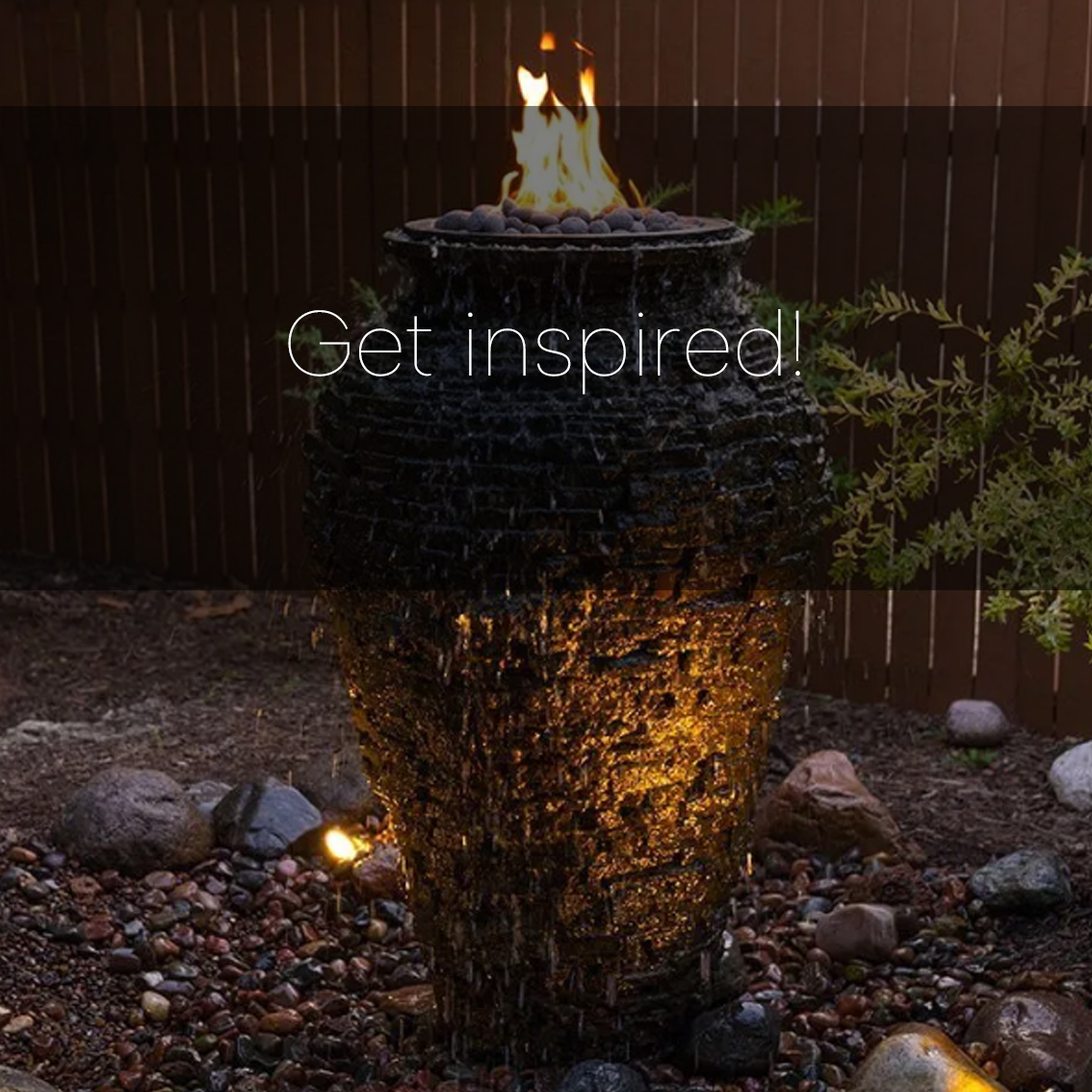
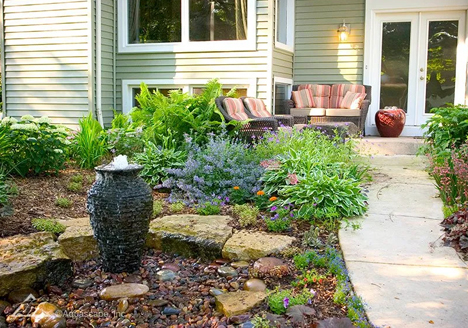
Rainwater Collection and Harvesting System Collects and Stores Precious Rainwater For Reuse
The Aquascape Rainwater Harvesting System (previously branded RainXchange) adds the beauty of a water feature to a rainwater collection system for capturing, filtering, and reusing our most precious resource – water! Whether you choose a Pondless® Waterfall or bubbling urn to add to your landscape, you’ll be happy knowing your rainwater harvesting system not only looks great but is beneficial for the environment too.
For more information on how the Aquascape Rainwater Harvesting System works, download your free copy of the Rainwater Harvesting Guide.
Rainwater Harvesting System Brochure
File size: 2.23 MB
The Composition of a back garden ecosystem pond
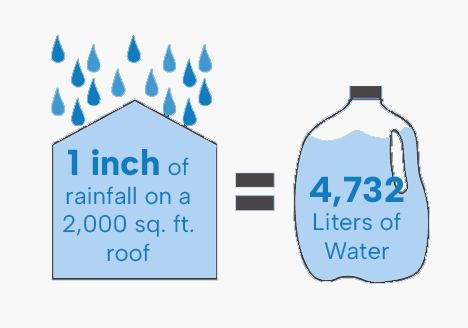
Offset Water Use With a Rainwater Collection System
Did you know?
A 185.8 square meter (2,000 square foot) residential roof in the UK can collect approximately 4,700 liters of water from 25.4 millimeters (1 inch) of rainfall.
With an average annual rainfall of 1,290 millimeters in the UK , such a roof could potentially harvest around 238,000 liters of water each year.
The average UK household uses approximately 349 liters of water per day , totaling about 127,385 liters annually.
Using a garden hose or sprinkler in the UK can consume between 500 to 1,000 liters of water per hour. Regular garden watering can significantly increase household water bills, especially during drier months.
Implementing rainwater harvesting systems can reduce reliance on mains water for gardening and other outdoor uses.
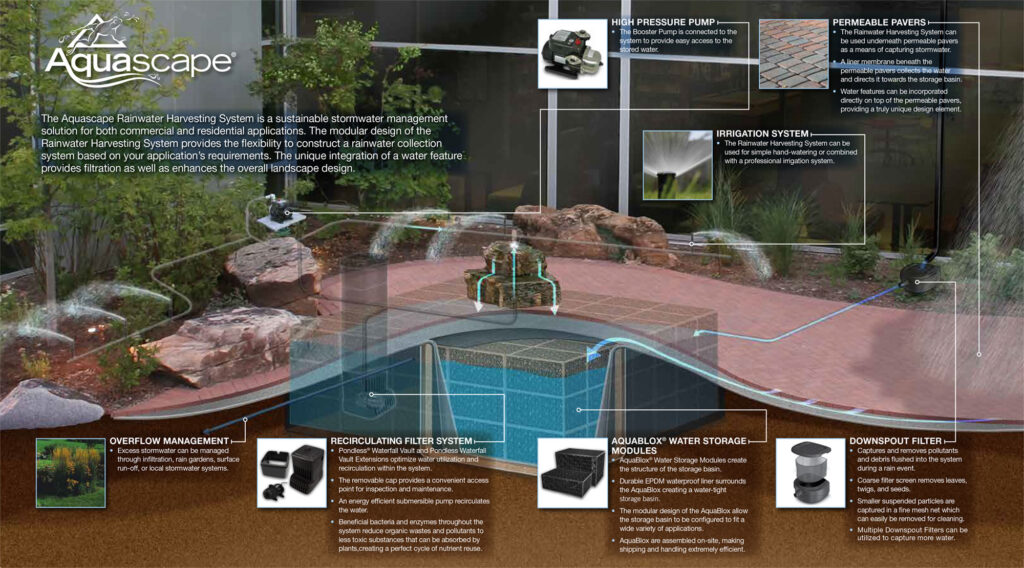
Aquascape Rainwater Harvesting System
The Aquascape Rainwater Harvesting System is a sustainable stormwater management solution for both commercial and residential applications. The modular design of the Rainwater Harvesting System provides the flexibility to construct a rainwater collection system based on your application’s requirements. The unique integration of a water feature provides filtration as well as enhances the overall landscape design.
State of the environment
Water is quickly becoming an “endangered species” on our blue planet. Urban growth increases storm water runoff, which in turn harms natural waterways. All life requires water for survival. Becoming aware of the current state of our environmental condition is the first step in identifying viable solutions to ensure clean and healthy water for future generations.
- Local water sources such as lakes, reservoirs and groundwater continue to decline despite regular rain events.
- Demand is becoming greater than the supply and the rains that do fall on our ground are lost.
- Rainwater is actually flowing away from the area it falls on due to development.
- Water cannot soak into asphalt, concrete or shingles. It flows very quickly off of these surfaces and in the process it carries a variety of pollutants from dust and dirt to oils, fertilizers and pesticides.
- This mixture flows quickly into storm sewers and in some cases, ponds and streams.
- Highly developed areas can have 50% or more surface area covered by impervious surfaces forcing water away from the area where it’s needed.
- Increased water velocity strips the aquatic vegetation from the shores exposing the soil to subsequent erosion and habitat loss.
- According to the EPA, urban runoff is the number one cause of pollution in coastal environments.
- Almost 50% of our stream miles, 45% of lake acres and 35% of estuary and bay square miles surveyed by the EPA are considered below the standards for fishing and swimming.
- As rainwater run-off is carried away it does not have the opportunity to soak into the soil or groundwater reserves so our aquifers continue to lose water and new water is not coming in.
- Wells throughout the country are going dry or have to be lowered to access the lower water levels.
